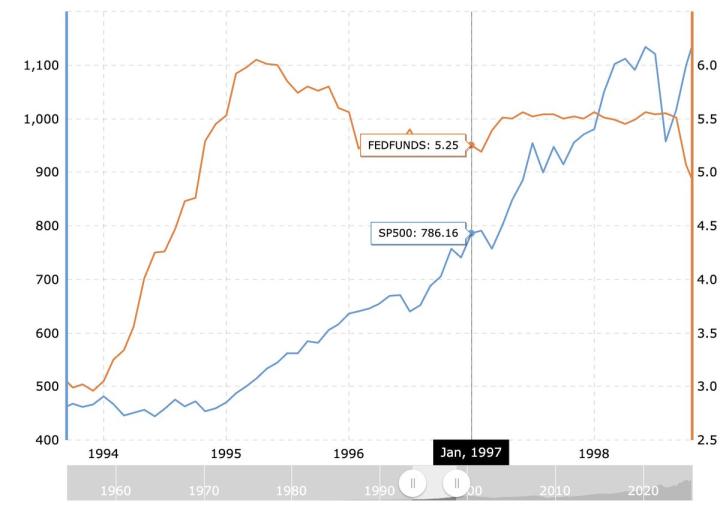Jessy, Jinse Finance
This week, the United States entered a macro news week, and the crypto market was also affected. Currently, after breaking through a new high, Bitcoin has been oscillating below $120,000 for 18 days, and after experiencing the US macro week news, Bitcoin's price has been continuously fluctuating downward.
On Wednesday, Bitcoin's price dropped after the Federal Reserve released the Federal Open Market Committee meeting minutes and Fed Chairman Jerome Powell held a press conference explaining why the central bank chose not to cut rates.
As of press time, according to OKX data, Bitcoin dropped to around $114,116. The overall macro environment this week was neutral to bearish, with the Federal Reserve maintaining rates unchanged at the FOMC meeting, and Chairman Powell not releasing a clear rate cut signal. The September rate cut expectation has fallen from previous optimism to a 50-50 or lower probability, and market risk appetite has quickly cooled.
Additionally, US economic data remains robust, core PCE inflation is still above the target, and with major global central banks becoming cautious, overall expectations of liquidity easing have weakened. Currently, the market has entered a cautious wait-and-see state.
Trade friction resurfaces, inflation expectations rise, September rate cut uncertain
The US Federal Reserve concluded its two-day monetary policy meeting on the 30th, announcing that the federal funds rate target range would remain unchanged at 4.25% to 4.50%. This decision was in line with market expectations and marks the fifth consecutive meeting where the Fed has maintained rates.
The meeting did not commit to a September rate hike or cut. Powell's speech emphasized "data dependence" and continued to be concerned about recent inflation and employment, stressing the need to observe the impact of tariff policies on inflation. After Powell's speech, US Treasury prices fell, the US dollar index rose to a new high since May, and the S&P 500 index declined. Long-term interest rates rose by about 0.2 percentage points due to political pressure, indicating market concerns about policy stability.
In other data, US Q2 GDP grew by about 3% year-on-year, significantly exceeding expectations, showing economic momentum remains. On inflation, while overall inflation data has been below expectations for five consecutive months, the core PCE price index monitored by the Fed remains at a high level of 2.5%, indicating inflation pressure has not fully eased. The overall unemployment rate remains low at 4.1%, with the labor market described as "robust". However, some employment data is not optimistic, such as youth unemployment rising to 5.8%, a ten-year high.
A new round of tariff orders targeting dozens of countries has been published. Trump has signed an executive order to formally implement tariffs (ranging from 10% to 41%) on multiple trading partners on August 7th.
The White House list shows that major economies like the EU and Japan that have agreements with the US receive relatively preferential tax rates. Switzerland and South Africa will face punitive tariffs of up to 39% and 30% respectively, India will be taxed 25%, goods from Taiwan and Vietnam will be taxed 20%, and goods from Cambodia, Thailand, Malaysia, and Indonesia will be taxed 19%. Additionally, the US President signed an executive order to raise tariffs on Canada from 25% to 35%, with the new tariffs effective from August 1st.
According to the White House executive order, the new tariff structure reveals a clear dual-track system: countries that have negotiated and reached agreements with the US will apply specific negotiated rates, while countries not on the specific list will face a uniform 10% baseline tariff.
The new tariffs will temporarily increase import costs, potentially exacerbating US and global inflation pressures, increasing business operating costs, especially in manufacturing and consumer goods sectors.
Meanwhile, the Bank of Japan raised its core CPI forecast through the 2027 fiscal year and adjusted its inflation risk assessment from "downward-leaning" to "generally balanced". This key linguistic shift is interpreted by the market as an important groundwork for future rate hikes. Overall, the global rate cut pace may be disrupted or paused.
In this macro context, the probability of a September rate cut has significantly decreased. Currently, the probability of the Fed maintaining rates until September is 58.7%, and the probability of a cumulative 25 basis point rate cut has dropped to 41.3%.
August market should be approached cautiously
Currently, Bitcoin has been oscillating below $120,000 for over two weeks and has continued to fluctuate downward amid cooling rate expectations and rising risk aversion. As of press time, Bitcoin dropped to a low of $114,116, still under downward pressure.
In the short term, Bitcoin and the entire crypto market face significant challenges in further advancing. On one hand, the Fed has not released a clear easing signal, and unstable rate expectations have weakened market risk appetite, making funds more conservative. Powell's "data-driven" wording and repeated emphasis on inflation have caused the market to re-price the possibility of September or even year-long rate cuts, putting pressure on risk assets including crypto.
On the other hand, the US's aggressive external tariff policy suppresses emerging markets, manufacturing chains, and global trade expectations, raising market uncertainty about future economic growth and inflation paths. This makes institutions more cautious when allocating risk assets.
CryptoQuant's latest report indicates that Bitcoin has just gone through the third large-scale profit-taking phase of the 2023-2025 bull market cycle. Data from late July shows daily realized gains reaching $6-8 billion.
Currently, Bitcoin's price is oscillating at high levels, with the market waiting and observing macro data clarity. The author believes that if the September rate cut window is ultimately confirmed, it could reignite the crypto asset rally. Before that, the market will likely remain cautiously adjusted, but the adjustment range won't be too large. If rates are not cut, the market outlook may not be optimistic. August is also the peak vacation period for European and American traders. In the past 7 years, BTC and ETH have fallen 5 times in August. Therefore, a cautious approach to trading is recommended in August.






